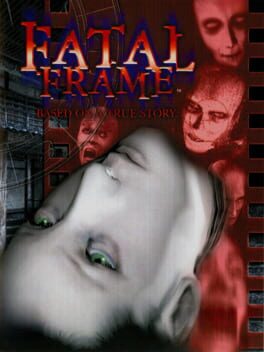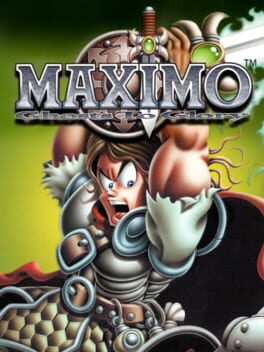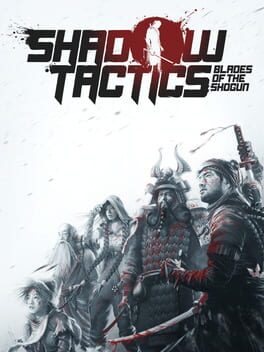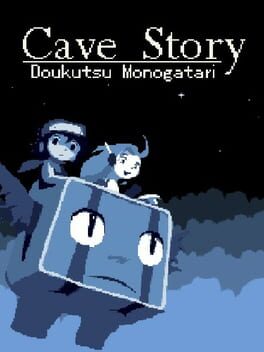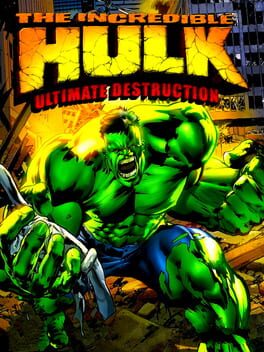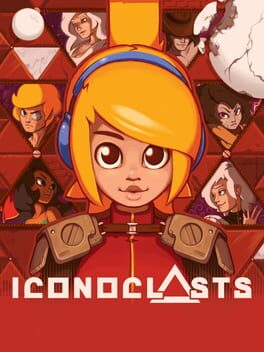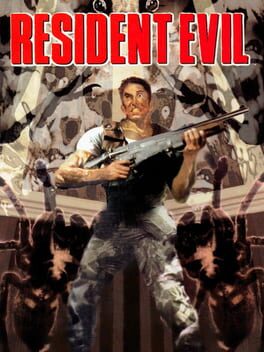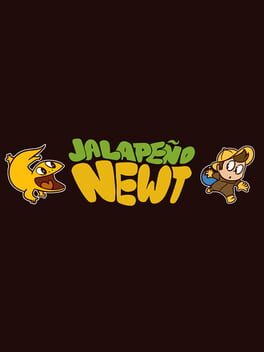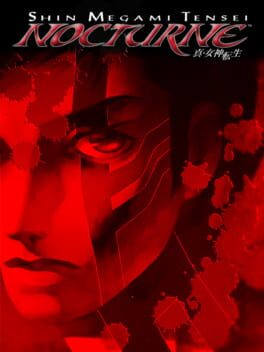2416 Reviews liked by Ardwyw_mp3
Fatal Frame
2001
This game joins both survival horror and on-rail shooter principles and makes its combat fair and engaging without renouncing to the tension and vulnerability that often comes with horror games.
The game surprisingly turns more arcadey the more you play it. The staged jumpscares that scared you the first time turn into fun 'bonus score' to keep an eye on subsequent runs, the anxiety inducing enemy movement patterns that inevitably culminated in the spectre jumping towards you turn into a fun acuracy challenge with a fun risk-reward mechanic.
Unlike most horror games where the horror sentiment either remains constant (like in tank control survivals) or accidentally disappears due to its loss of shock value, Fatal Frame fully embraces this loss and decides to make it a fun game for second-timers.
The game surprisingly turns more arcadey the more you play it. The staged jumpscares that scared you the first time turn into fun 'bonus score' to keep an eye on subsequent runs, the anxiety inducing enemy movement patterns that inevitably culminated in the spectre jumping towards you turn into a fun acuracy challenge with a fun risk-reward mechanic.
Unlike most horror games where the horror sentiment either remains constant (like in tank control survivals) or accidentally disappears due to its loss of shock value, Fatal Frame fully embraces this loss and decides to make it a fun game for second-timers.
Esta revisión de los dos primeros juegos de la saga Commandos (se eliminan cosas del segundo, al que se asemeja más en general, para que sea casi tan directo como el primero) quizá se antoje demasiado familiar para quien, como yo, haya jugado los originales. Aquellos títulos, estupendos, eran irregulares y problemáticos a nivel técnico. Había que tolerar, pero se hacía porque la experiencia propuesta era única y estaba muy conseguida. Y lo que viene a hacer Shadow Tactics es ofrecer esa misma experiencia sin aristas, sin puntos flojos, todo más redondo y aprovechando años de aprendizaje en diseño de nivel y otras disciplinas videojueguiles. Muy derivativo, ¿no? Por suerte, hay más.
Shadow Tactics posee dos elementos diferenciadores respecto a Commandos: las "Shadow Tactics" que dan nombre al juego, y el enfoque personal que cobra la narración. Lo primero es un sistema que permite almacenar las acciones a realizar de distintos personajes por separado para después ejecutarlas al mismo tiempo, y lo segundo una manera de conectar las misiones mediante sucesos que involucrarán emocionalmente a los personajes. El primer añadido debería ser gigantesco (por las posibilidades tácticas que abre) pero termina por ser mediano o pequeño, pues su empleo no suele ser necesario, pero el segundo, en teoría menos importante, cambia la manera en que procesamos nuestros actos, que terminarán por volverse cuestión personal, generando ese "efecto viaje" tan presente en videojuegos de aventura y que uno nunca esperaría en una propuesta así.
Shadow Tactics posee dos elementos diferenciadores respecto a Commandos: las "Shadow Tactics" que dan nombre al juego, y el enfoque personal que cobra la narración. Lo primero es un sistema que permite almacenar las acciones a realizar de distintos personajes por separado para después ejecutarlas al mismo tiempo, y lo segundo una manera de conectar las misiones mediante sucesos que involucrarán emocionalmente a los personajes. El primer añadido debería ser gigantesco (por las posibilidades tácticas que abre) pero termina por ser mediano o pequeño, pues su empleo no suele ser necesario, pero el segundo, en teoría menos importante, cambia la manera en que procesamos nuestros actos, que terminarán por volverse cuestión personal, generando ese "efecto viaje" tan presente en videojuegos de aventura y que uno nunca esperaría en una propuesta así.
Cave Story
2004
A Cave Story lo hace su empaque. El juego no es excelente en nada: ni su acción, ni su diseño de nivel, ni la historia que cuenta. Es un mix tirando a conservador de mecánicas y feeling de la época de 8-16 bits que destaca por sus espacios y cómo la navegación por y entre ellos construye poco a poco una sensación de mundo y narrativa infrecuentes (¿inéditos?) en los títulos de acción de los que bebe. En definitiva, el shooter plataformero clásico reformulado como gran aventura, con sus niveles diseñados como lugares de un mundo (distintos entre ellos pero conectados) y dispuestos como sucesión de eventos subyugada al ritmo de la narración (lo que propicia una sensación de ritmo y urgencia creciente improbables en un metroidvania o plataformas común).
Ver cielo por primera vez tras dos tercios de juego bajo tierra y que el nivel se juegue tan solo subiendo (con ese logrado scroll parallax de las nubes y la evocadora Moonsong acompañando la escalada) es quizá el ejemplo más evidente de los logros de Cave Story. Que son este mismo una y otra vez, solo que de forma menos evidente.
Ver cielo por primera vez tras dos tercios de juego bajo tierra y que el nivel se juegue tan solo subiendo (con ese logrado scroll parallax de las nubes y la evocadora Moonsong acompañando la escalada) es quizá el ejemplo más evidente de los logros de Cave Story. Que son este mismo una y otra vez, solo que de forma menos evidente.
Undertale
2015
Undertale intenta hacer que sus personajes importen, pero su escritura inmadura e irritante y su visión naive del mundo son un tiro por la culata importante.
Puedes matar a un puñado de personajes, perdonar a otros cuantos y el juego te llama neutral. Según Undertale, todo el mundo puede ser tu amigo, merece ser perdonado y la violencia nunca es la solución aunque te intenten MATAR.
Brillante reflexión sobre el sadismo y la piedad, Toby.
Al menos la música está guapa y cuando se pone meta tiene unos cuantos puntillos interesantes.
Puedes matar a un puñado de personajes, perdonar a otros cuantos y el juego te llama neutral. Según Undertale, todo el mundo puede ser tu amigo, merece ser perdonado y la violencia nunca es la solución aunque te intenten MATAR.
Brillante reflexión sobre el sadismo y la piedad, Toby.
Al menos la música está guapa y cuando se pone meta tiene unos cuantos puntillos interesantes.
Pepsiman
1999
Rabi-Ribi
2016
Perhaps one of the best Superhero games ever made. It understands the sheer fun of having a diverse enough system to create simple chaos and destruction to live up to the character fantasy, while also giving very tense campaign missions that really show equal respect for the forces you are facing unlike recent superhero games. Bosses are incredibly imposing and more varied than one might think, with tons of spectacular grabs and attacks.
Urban Reign
2005
Iconoclasts
2018
(First sentence refers to the last line of Dandara review.)
Iconoclasts goes the other way, not exploring platforms in space but using them to tell a story of subjectivities at war. Ideology as platform, personality as platform. Essentially, character as platform. This makes for a knotted, thorny game full of difficult people. In other words, a hardcore platformer. If platforms are people.
I used to have a very broad idea of the platformer. Especially as a storytelling device. There was something so natural about the story of a pit. All the ways one might fall in or climb out. The natural range of emotions that comes with moving across a landscape. How different people might face the same world. But somewhere along the way, as style and difficulty began to dominate, even thematized difficulty, I stopped thinking of their potential this way.
So I came out of Iconoclasts with something like gratitude. I thought I was getting another metroidvania with a cool look. But turns out it’s not actually a metroidvania. Its spatial logic serves its story more than your empowerment. And its pixel art is not there to impress you. Instead, the blocky unnaturalness raises unexpected metaphysical questions. It may be one of the only games that tries to reckon with pixel art, what and how it means, and what it signifies for worldbuilding.
Iconoclasts’ characters don’t know what to make of their strange, hard-edged world. And they’re not nice about it. They constantly pierce each other’s sacred solipsism, that worldview and faith we need in order to live. Everyone ends up being an iconoclast to each other. None more so than my favorite character, Mina. Her directness, her intensity and realness, her raw family trauma, even her smelliness, they both endeared her to me and left me shook. Because I’m full of fire too. And I don’t know what to make of the world either.
The game is not exactly encouraging about any of this. People die, their rightness or wrongness left hanging, and those left behind must reckon with the remains. There aren’t lessons to learn or much in the way of a player’s personal edification. Iconoclasts instead offers a rare realism about difference, about unresolved subjectivities. Or rather, subjectivity as something ultimately unresolvable. Your Robin is a mechanic who can fix almost anything. But not this.
And yet Iconoclasts ends with a kind of hope. As the known world is threatened and transformed, Robin’s hardass brother Elro finally relents as well. “Alright, Robin…I won’t try to tell you what to do anymore.” Our silent heroine hears him, pauses a moment, and then flops down in bed. Hard cut. But you feel this space open up, this possibility between people, if not to celebrate their iconoclasm, to at least let it lie. The game knows that small shifts between people matter as much as the defeat of a calamitous space worm. The credits then reveal an almost comically long list of named characters because that’s what the game cares about in the end. No system of belief can contain all these people. No explanation is total.
Iconoclasts goes the other way, not exploring platforms in space but using them to tell a story of subjectivities at war. Ideology as platform, personality as platform. Essentially, character as platform. This makes for a knotted, thorny game full of difficult people. In other words, a hardcore platformer. If platforms are people.
I used to have a very broad idea of the platformer. Especially as a storytelling device. There was something so natural about the story of a pit. All the ways one might fall in or climb out. The natural range of emotions that comes with moving across a landscape. How different people might face the same world. But somewhere along the way, as style and difficulty began to dominate, even thematized difficulty, I stopped thinking of their potential this way.
So I came out of Iconoclasts with something like gratitude. I thought I was getting another metroidvania with a cool look. But turns out it’s not actually a metroidvania. Its spatial logic serves its story more than your empowerment. And its pixel art is not there to impress you. Instead, the blocky unnaturalness raises unexpected metaphysical questions. It may be one of the only games that tries to reckon with pixel art, what and how it means, and what it signifies for worldbuilding.
Iconoclasts’ characters don’t know what to make of their strange, hard-edged world. And they’re not nice about it. They constantly pierce each other’s sacred solipsism, that worldview and faith we need in order to live. Everyone ends up being an iconoclast to each other. None more so than my favorite character, Mina. Her directness, her intensity and realness, her raw family trauma, even her smelliness, they both endeared her to me and left me shook. Because I’m full of fire too. And I don’t know what to make of the world either.
The game is not exactly encouraging about any of this. People die, their rightness or wrongness left hanging, and those left behind must reckon with the remains. There aren’t lessons to learn or much in the way of a player’s personal edification. Iconoclasts instead offers a rare realism about difference, about unresolved subjectivities. Or rather, subjectivity as something ultimately unresolvable. Your Robin is a mechanic who can fix almost anything. But not this.
And yet Iconoclasts ends with a kind of hope. As the known world is threatened and transformed, Robin’s hardass brother Elro finally relents as well. “Alright, Robin…I won’t try to tell you what to do anymore.” Our silent heroine hears him, pauses a moment, and then flops down in bed. Hard cut. But you feel this space open up, this possibility between people, if not to celebrate their iconoclasm, to at least let it lie. The game knows that small shifts between people matter as much as the defeat of a calamitous space worm. The credits then reveal an almost comically long list of named characters because that’s what the game cares about in the end. No system of belief can contain all these people. No explanation is total.
Dandara
2018
Dandara is the first of two games that reinvigorated 2D platformers for me in 2018. Between the boring abstraction of Gris and the masocore traditionalism of Celeste, I had trouble finding anything that actually did something new with a genre I’ve long loved. Sure there were plenty of metroidvanias in between, but I continue to find them the most tiresome articulation of a gamespace. That structure, that unfolding, it is known. What else can the 2D platformer do?
For one, it can take away gravity and running and jumping altogether. It can work in straight lines rather than arcs. It can put the platform back in platformer. Because without gravity, a world becomes platformed anew. What is a platform? A place from which to launch. A place on which to land.
Despite its innovative approach to movement, Dandara is a modest game. It’s barely a metroidvania, with limited backtracking and only a handful of locks and keys. And what retraversal it does require remains a pleasure to the very end. It is perfectly paced and does not overstay its welcome, so nothing gets old. You are given a unique space to explore with its own distinct logic, compelling neo-historical visuals and chill sound design, matter-of-fact challenge that neither taunts nor condescends, and individually named rooms that provide some of the best flavor text of the year. Dandara knows what it’s about and brings it off with confidence and grace.
For one, it can take away gravity and running and jumping altogether. It can work in straight lines rather than arcs. It can put the platform back in platformer. Because without gravity, a world becomes platformed anew. What is a platform? A place from which to launch. A place on which to land.
Despite its innovative approach to movement, Dandara is a modest game. It’s barely a metroidvania, with limited backtracking and only a handful of locks and keys. And what retraversal it does require remains a pleasure to the very end. It is perfectly paced and does not overstay its welcome, so nothing gets old. You are given a unique space to explore with its own distinct logic, compelling neo-historical visuals and chill sound design, matter-of-fact challenge that neither taunts nor condescends, and individually named rooms that provide some of the best flavor text of the year. Dandara knows what it’s about and brings it off with confidence and grace.
Resident Evil
1996
Sin tener las mejores piezas, con destreza y buenas ideas, consiguen hacerlas encajar en una aventura compacta y mucho más divertida de lo que se podría esperar uno. Poco hay que comentar sobre los controles de tanque y los ángulos de cámara, el propio Mikami lo tiene claro, son un parche. Y buscar llaves y abrir puertas en un diagrama de flujo mientras gestionas recursos funciona aquí por lo centrado que está el juego, pero no habría que esperar mucho para ver lo deficiente de la fórmula. Y aun con eso, el resultado es esta odisea de estética pulp por escapar de la casa encantada que nos empuja a profundizar en el terror que se esconde bajo la superficie. Totalmente merecido el estatus de clásico.
